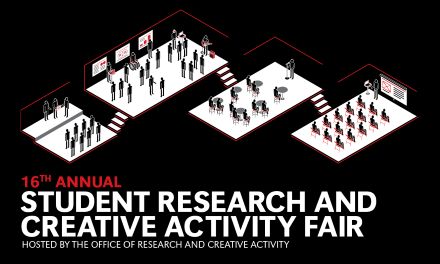Cognitive Complexity under High Cognitive Load situation (HCLS) in Older Adults
Advisor Information
Julie Blaskewicz Boron
Location
MBSC Ballroom - Poster #702 - G
Presentation Type
Poster
Start Date
4-3-2022 10:45 AM
End Date
4-3-2022 12:00 PM
Abstract
Walking and talking on the phone are common high-cognitive-load-situations (HCLS; e.g. dual-tasks), requiring extra attentional allocation and increasing perceived stress. We explored whether two load types, 1) single-task (ST) walking or talking on a phone and 2) HCLS walking while talking on a phone, influenced walking and/or cognitive performance among young (n=7; age=23.00±2.08yrs), middle-aged (n=14; age=44.79±7.42yrs), and older (n=15; age=74.47±3.91yrs) adults while controlling for perceived stress. Participants completed 3-minute trials of single-task walking (ST-W), single-task phone conversations with common (e.g., weather; ST-C) and uncommon topics (e.g., life experience; ST-U), and walking while talking on a phone (HCLS-C and HCLS-U). Walking speed was analyzed with 3(ST-W;HCLS-C;HCLS-U) x 3(Age) ANCOVA. HCLS resulted in slower walking speed (p
Scheduling Link
1
Cognitive Complexity under High Cognitive Load situation (HCLS) in Older Adults
MBSC Ballroom - Poster #702 - G
Walking and talking on the phone are common high-cognitive-load-situations (HCLS; e.g. dual-tasks), requiring extra attentional allocation and increasing perceived stress. We explored whether two load types, 1) single-task (ST) walking or talking on a phone and 2) HCLS walking while talking on a phone, influenced walking and/or cognitive performance among young (n=7; age=23.00±2.08yrs), middle-aged (n=14; age=44.79±7.42yrs), and older (n=15; age=74.47±3.91yrs) adults while controlling for perceived stress. Participants completed 3-minute trials of single-task walking (ST-W), single-task phone conversations with common (e.g., weather; ST-C) and uncommon topics (e.g., life experience; ST-U), and walking while talking on a phone (HCLS-C and HCLS-U). Walking speed was analyzed with 3(ST-W;HCLS-C;HCLS-U) x 3(Age) ANCOVA. HCLS resulted in slower walking speed (p

